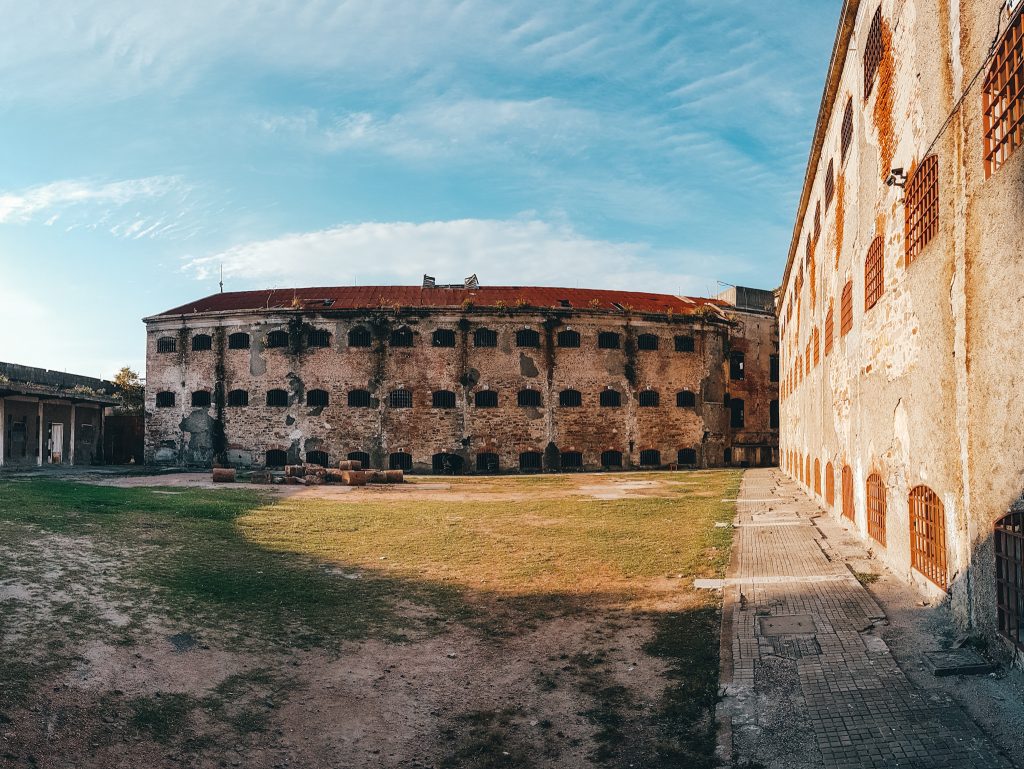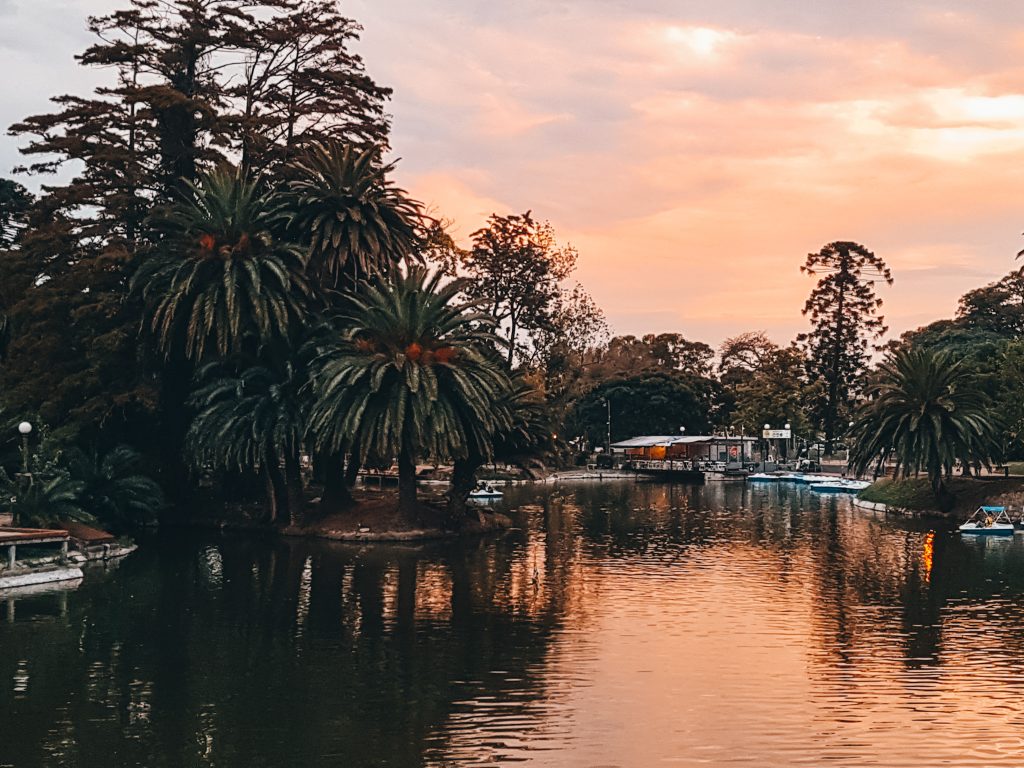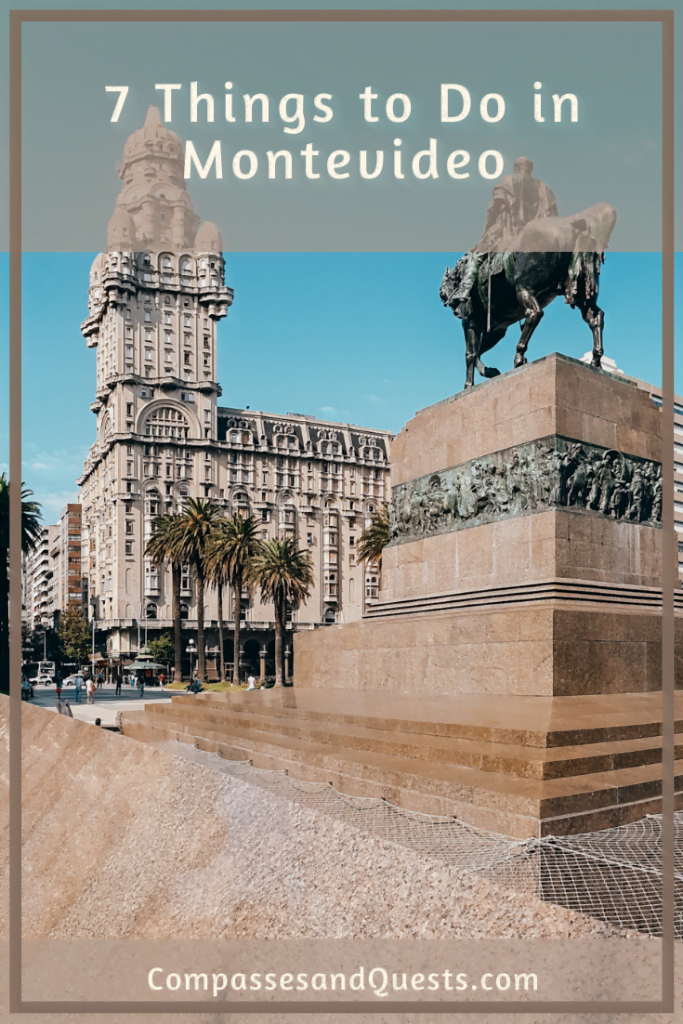Uruguay’s capital city offers a unique charm that we had the pleasure of experiencing on our jaunt through South America. Montevideo was our first stop in Uruguay, and the modernity of the country was immediately apparent to us as we explored. Yet the history and strong cultural roots were also apparent in the museums, cuisine, parks, and other aspects of the city. We truly enjoyed our time here and found ourselves wishing we had more. There are many things to do in Montevideo, but here are a few of the activities we recommend from our few days there.

1. Museum Hop
Montevideo had quite the variety of museums, each offering a look into the culture, thriving art scene, and history of Uruguay. A few are free to enter while others require a fee. Some have exhibits only in Spanish, but you are often able to take a tour with an English guide or ask for the information in English/other format if available. You could spend several days in museums here, diving deep into many intriguing topics. However; that was sadly not an option for us, so we had to pick and choose. The following are a few we enjoyed.

Museo Nacional de Artes Visuales:
We visited this museum the same evening we arrived in Montevideo. It sits in the middle of beautiful Parque Rodó and is free to enter. Museo Nacional de Artes Visuales isn’t huge, but it holds wonderful works from a variety of artists.
Museo del Carnival:
We spent Carnival in Bolivia, so we were not able to experience Uruguayan Carnival (the longest Carnival celebration in the world!). This small museum contains costume displays, videos, and more highlighting the history of Carnival in Uruguay. Entry to Museo del Carnival is 150 Uruguayan pesos (around USD$4).
Museo del Gaucho:
This small museum lies in the beautiful Palacio Heber and highlights the culture and history of Uruguay’s gauchos (cowboys). Exhibits detail the more rustic lives and culture that still can be seen in countryside beyond the bustling coastal cities today. There is also a section of this building that focuses on the history of Uruguay’s currency if you are interested in stopping while you are there too! This museum is free of charge.
Espacio de Arte Contemporáneo:
Not only does this museum contain a wide variety of unique art pieces, the exhibits are staged in a building that used to be a prison. Prison cells and halls contained videos, light shows, sculptures and more. After wandering the prison to observe the art, we explored the eerie prison courtyard. This museum is also free to enter!

2. Hit the Beach
After many days of walking around Buenos Aires and Montevideo, we were looking forward to some beach relaxation. Uruguay is a popular summer destination in South America, but don’t be expecting crystal clear waters or picturesque palm-lined shores. Uruguay beaches are more known for surfing, large events on popular beaches, and lounging on the stretches of sprawling sand.
Playa de los Pocitos is a Montevideo hotspot. This long, sandy beach is surrounded by resort hotels, shops, and high-end restaurants. We were staying near Playa Ramírez, a smaller and quieter beach with calm water. We didn’t swim at the beaches in Montevideo but enjoyed relaxing on the shore in between activities.

3. Cruise La Rambla
If you aren’t too keen on just sitting at the beach, you can still see much of it from La Rambla, which is supposedly the longest stretch of sidewalk in the world. Bike rentals are available in Montevideo if you’d rather cycle than walk or want to cover more ground. The path runs along the coast for almost 14 miles (about 22 kilometers) offering access to beaches, restaurants, city sights, and parks.
This is a popular spot to get some exercise. You’ll see many people out for a stroll with their dogs, cycling, skating, or jogging. People also gather along La Rambla to hang out with friends, drink some maté, and watch the world go by.

4. Explore Mercado del Puerto
Just outside the heart of the city is a port area on the Bay of Montevideo. Mercado del Puerto is the port market that has been around since the late 1800s. It once offered meats, fruits, vegetables, and other import items but has since transformed to more of a restaurant area.
The large covered ‘market’ has many little restaurants within it, serving seafood dishes, parrilla (grilled meats), and other Uruguayan cuisine. There are a couple shops in the mercado, but more vendors and street performers can be found around it, especially on weekends.

5. Admire Plaza Independencia
Plaza Independencia is truly a beautiful central square! Aside from being well maintained, the architecture around it is very unique. Palacio Salvo and Mausoleo de Artigas are the two notable structures in the square. Around the plaza, you’ll see Teatro Solís, Puerto de la Ciudadela, and more. If you are in Montevideo, the plaza is a must see.

6. Stroll Through Montevideo’s Parks
Montevideo has many green spaces to enjoy among the concrete buildings that line each street. Jardín Botánico de Montevideo, de Cactus, and Japonés are designated botanical gardens around Montevideo, but there are other natural areas that you’ll come across while wandering the city.
Parque Prado, Parque Rodó, Parque de Los Aliados, and Parque Rivera are common spots where locals go to relax, walk, and hang out with friends. Parque Rodó was near to our accommodation, and we quite enjoyed strolling around the park and watching the sunset there. Some parks host events and fairs or offer activities like feeding the ducks or paddleboat rentals.

7. Visit Fortaleza Del Cerro
Situated above the Bay of Montevideo sits Fortaleza del Cerro, an old fortress built in the early 1800s to protect the city from invasion. Now, the old fort is a military museum containing old weaponry and information on the history of the city. From Fortaleza Del Cerro, you’ll have a beautiful view over Montevideo.
We were told that we could walk there, but we were staying a ways away and were told that people often have trouble getting up there, so we opted for a taxi. It is free to get into the fort grounds but there is a small fee if you want to get into the museum (only a couple USD per person). Displays are in Spanish, so if you don’t speak it, go with a tour if you are interested in the history.

Like this Post? Pin it!




